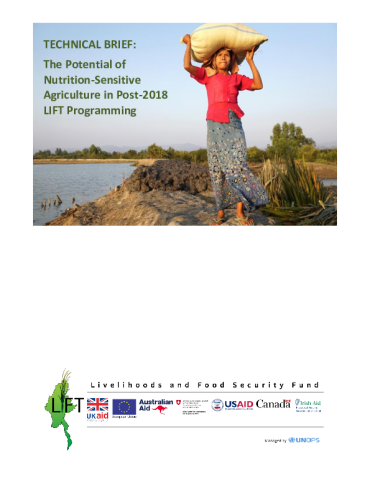
This technical brief clarifies definitions and approaches, and provides the basis for a common understanding on the topic across different actors and organisations. The purpose of the document is to offer a brief overview of global evidence and a review of selected LIFT-funded nutrition-sensitive agriculture projects to date, highlighting successes, challenges and limitations, and articulating the potential scope of what nutrition sensitive-agriculture could look like for LIFT, including recommendations for future programming. LIFT’s current and future implementing partners will find this document useful as a reference.
While a number of nutrition-specific interventions have proven to be effective and to yield high returns on investment, even if implemented at scale they cannot meet global targets for improving nutrition. In fact, a 2013 Lancet Journal article estimates that nutrition-specific interventions can only address 20 per cent of the nutrition problem. The remaining 80 per cent must be tackled through nutrition-sensitive interventions. As evidence emerges, the concept of nutrition-sensitive programming has gained traction globally. Investments in agriculture, which have great potential to improve (or undermine) nutrition outcomes, reach their fullest potential when deliberately designed and planned with the intention of having a positive impact on nutrition.
Since the inclusion of nutrition in the LIFT 2014 Strategy, implementing partners have been engaging in nutrition-sensitive agriculture projects in earnest. Nutrition-sensitive agriculture (NSA) aims to maximise the impact of nutrition outcomes for the poor, while minimising the unintended negative consequences of agricultural interventions and policies. There are three main pathways through which agriculture can impact nutrition, including food production, agricultural income, and women’s empowerment.


